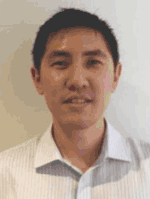Application of dynamic simulation to assess the effectiveness of well clean-up in a horizontal gas well
Hsiao Wun Moh A C , Erni Dharma Putra A and Rahel Yusuf BA Schlumberger, 256 St Georges Terrace, Perth, WA 6000, Australia.
B Schlumberger Global Support Center Limited, Level 6, C1 Building, One Central, Dubai World Trade Center, Al-Sa’ada Street, Plot number 336301, Dubai, UAE.
C Corresponding author. Email: HMoh@slb.com
The APPEA Journal 57(2) 617-622 https://doi.org/10.1071/AJ16246
Accepted: 7 April 2017 Published: 29 May 2017
Abstract
Well clean-up operation involves the removal of drilling and completion fluids from the wellbore before diverting the well to production facilities. Natural flow clean-up is preferred due to its relatively low cost and simplicity. Depending on the weight of the initial contents in the wellbore and the reservoir properties, artificial lift assisted clean-up such as nitrogen injection through coiled tubing may be required for some wells to ensure the well clean-up objectives are achieved. Well clean-up is transient in nature thus necessitating the need for a dynamic simulation approach to assess the effectiveness of different clean-up options and arrive at the optimal procedure before embarking on the actual field operation.
In the current study, a comprehensive-multiphase-transient-simulator (OLGA) was used to predict the clean-up of a gas well with relatively short horizontal open-hole section and low reservoir pressure. Dynamic simulations of clean-up operations for different scenarios such as mud cake lift-off pressures and uncertainties in well productivity were conducted to assess the effectiveness of natural clean-up. Well clean-up failure could lead to impaired deliverability and potential for preferential flow hotspots. The study also assessed if coiled tubing-assisted operations would be beneficial in cases of natural clean-up being ineffective.
This paper demonstrates the importance of using transient simulations to provide useful insights into flow and pressure dynamics inside the wellbore during clean-up which can help engineers to predict, design and optimise well clean-up operations, thus increasing the probability of a successful clean-up operation.
Keywords: coiled tubing clean-up, dynamic simulation, horizontal gas well, mud cake lift-off, natural production, nitrogen gas injection, open-hole completion, transient simulation, well clean-up.

Hsiao Wun Moh joined Schlumberger after graduating with a Bachelor Degree in Engineering in 2001. With more than 15 years in the oil and gas industry, Moh started his career as a field engineer in Canada, Malaysia and Australia. In 2008, he moved into the role of Reservoir Engineer in Schlumberger Australia. His work experience includes formation testing, downhole fluid sampling and production logging interpretation. He also has experience in well completions and is currently involved with well production modelling and reservoir simulation. |

Erni Dharma Putra graduated with a Bachelor of Engineering (Hons) from the Department of Chemical Engineering, The University of Melbourne, Australia. She possesses over 11 years of experience in the oil and gas industry with specialisation in flow assurance and background in process engineering. Currently, she is the Senior Production Engineer (Production and Flow Assurance) with Schlumberger Australia Pty Ltd. Erni’s key skills include multiphase flow steady-state and dynamic analysis modelling and consultancy work (subsurface/wellbores, flowlines and topsides), process simulation modelling and technical process safety work. She has extensive work experience in various project phases including conceptual design, FEED, execution phase (EPC) and exposure to the offshore exploration and production (operation) environment. She is a member of the SPE. |

Dr Rahel Yusuf, SPE, works as Senior Engineer-Production and Flow Assurance at Schlumberger in Dubai and holds a PhD in chemical engineering from NTNU Norway. His current role revolves around consultancy, training delivery and business development for transient multiphase flow simulations in wells and pipelines to address flow assurance and production optimisation challenges. Rahel’s area of expertise is dynamic thermal-hydraulic analysis of all components of the hydrocarbon pathway from near wellbore reservoir to surface production facilities. He has more than 14 years’ experience within exploration and production industry in the Middle East, Far East Asia and the North Sea for developing solutions that provide better understanding of flow assurance and production challenges in the oilfield. |
References
Browne, S. V., and Smith, P. S. (1994). Mudcake cleanup to enhance productivity of high-angle wells. Paper SPE 27350. In ‘SPE Intl. Symposium on Formation Damage Control, Louisiana, 7–10 February 1994’.Xu, Z., Maurera, J., and Shields, C. (2010). Well displacement hydraulics – a field case study and simulation investigation. Paper SPE 137342. In ‘The Abu Dhabi Internation Petroleum Exhibition & Conference, UAE, 1–4 November 2010’. (Society of Petroleum Engineers)
Zain, Z. M., and Sharma, M. M. (1999). Cleanup of wall-building filter cakes. Paper SPE 56635. In ‘The 1999 SPE Annual Technical Conference and Exhibition, Houston, 3–6 October 1999’. p. 1. (Society of Petroleum Engineers)


